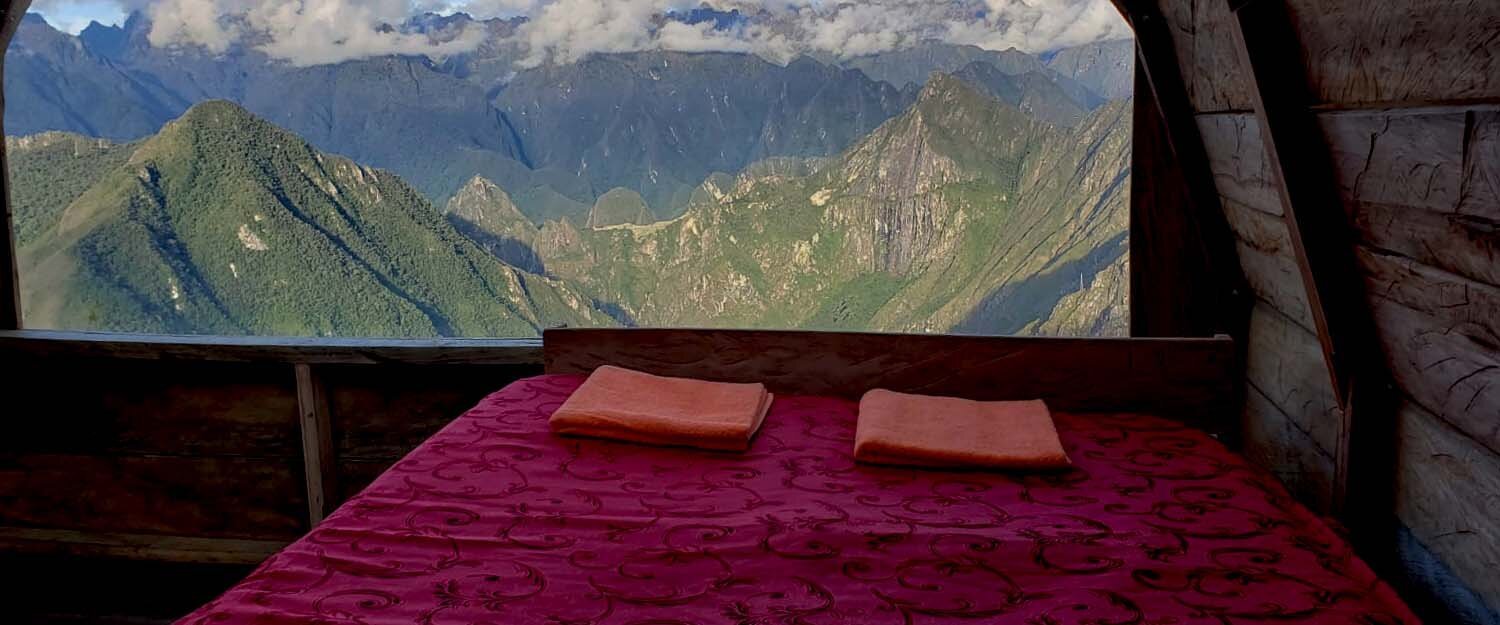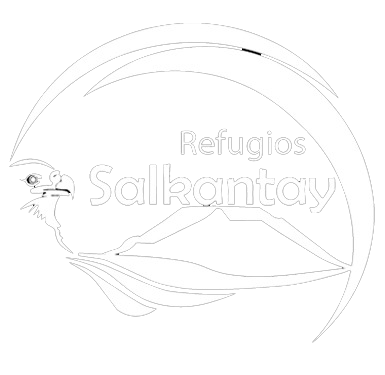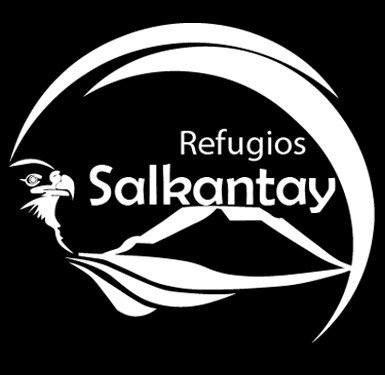
Frequently Asked Questions
The best time to do the Salkantay Trek is from March to December. The months from April to November are considered the best since the weather is warmer and the chances of rain are lower.
We as Salkantay Refugios operate from March 1st to the fortnight of January.
The months of March, December and January are likely to have rain but are not very crowded.
However, it is worth mentioning that the weather in the mountains is unpredictable and can vary even during the same day, so it is important to be prepared for changes in the weather at any time of the year.
It is not necessary to have previous trekking experience to do the Salkantay Trek, but it is recommended to be in good physical condition and comfortable to walk long distances. The Salkantay Trek can be challenging, with steep trails.
If you are not sure of your fitness level, don't worry, we have years of experience and will tailor an itinerary to suit your fitness level and you will be able to do it without any problems.
We include a horse to ride on the most difficult section (Soraypampa - Salkantay pass).
The weather is very unpredictable, changes quickly, and varies by season. It is impossible to say exactly what kind of weather you will encounter on your trek. However, in general, the firs night will be quite cold. It can get down to about 5 degrees Celsius. Towards the end of your trek, you will be in the Peruvian jungle. In these sections of the trek could be as hot as 25 degrees Celsius.
- Hiking boots: comfortable and sturdy with non-slip soles that fit well.
- A change of clothes – please be prepared for every type of weather from cold and hot, to wet and dry.(It is important to remember to pack only what is necessary.)
- Spare, dry socks are a necessity.
- Rain gear: a waterproof jacket and pants to protect from rain. You can buy a rain poncho almost everywhere but best to do so in Mollepata for around $1.50 USD.
- Hat, sunglasses and sunscreen: to protect from the sun and wind at high altitudes.
- Insect Repellent – minimum recommended 20% DEET – although there is no recorded malaria in the area, bites can be itchy.
- Sandals to allow your feet to rest.
- Swimsuit (if you want to enjoy the thermal springs).
- Original Passport and student cards.
- Flashlight or headlamp:
- Please bear in mind that knives or anything with a sharp metal point will be confiscated in Machu Picchu.
- Cash! – Enough for snacks, tips, souvenirs, - bring in small denominations - no large notes.
YES, hot water is available throughout the tour.
Every night you will be able to take a hot shower and you will also have body and face towels at your disposal.
There are 2 options to return to Cusco:
A: Train: (AGUAS CALIENTES - OLLANTAYTAMBO) There are many train schedules that leave practically all afternoon from 2 to 9 pm , we recommend taking the train from 2:30 to 4 pm.
The trains already sell the bimodal service that includes the bus to the city of Cusco and leave them a few blocks from the plaza of Cusco.
B: Bus: You have to make a 3 hour walk along the train tracks (Aguas Calientes - Hydroelectric) then a public bus / minibus - 6 hours approx. (Hydroelectric - Cusco)
It has an approximate cost of $20
No need to book in advance but we recommend leaving Aguas Calientes no later than 1 pm.
YES, one day before your trip we will give you all the information about the hike.
All the families work together and we will always make sure that your trip is safe. Every night at dinner time we explain again the hike you will do the next day.
Every day we show you the beginning of the trail and accompany you for a certain stretch and along the way you will always meet other hikers or local people.
The second day, which is the longest and hardest, we accompany you practically the whole day, we always go behind you with a horse to ride. And if you want to do the trail alone and we see that you are well we will always keep an eye on you.
We carry all the weight, you only need to carry a small backpack and enjoy the trip.
Trust us and enjoy your trip, we will take care of the rest.
We recommend a minimum of 2 days acclimatization period in Cusco before you start this trek.
The fact because few people have ever been at such high altitudes, it is difficult to judge who will suffer from altitude sickness, there are no specific reasons why one person suffers and another person doesn't. It is not dependent on age, weight, gender, or even physical condition, simply put, some people are affected more than others.
All the families of Refugios Salkantay are trained as well as the guides in case you get sick. All the shelters have a first aid kit and oxygen.
When our clients are affected by altitude sickness or are tired more than normal, in the most difficult stretch families carry a first aid kit and oxygen and a horse to ride (Soraypampa - Salkantay Pass) at no additional cost.
And in the following days we adjust your itinerary a little bit, there are other forms of transportation along the trek, such as: cars and trains, but it has an additional cost.
We will do our best to make you feel better, but we cannot give you any medicine for the altitude. It is very important to be hydrated before and during the trek drinking on average 2-3 liter of water per day.
In reality, it is actually quite difficult to get lost on this trek. However, there is always the possibility get distracted if we are talking, taking in the scenery, taking photos, etc.
For this reason, the 12 families who work together with Refugios Salkantay, are always alert as to what time you should be arriving. Each cabin has a large, visible sign with our logo which you can see from a distance.
The first cabins on the route also have telephone and internet access for any emergency situation.
We also have along the route, small businesses, shops, and most importantly other trekkers to ask for directions (usually with guides). There are also clear signs along the trekking routes it is actually quite difficult to get lost.
- Fill out the form in the reservation section of our website.
- Pay your deposit and let us know when you have paid, our system does not automatically notify us when you have paid your deposit.
- Once you have received your booking confirmation, review it to confirm that everything is correct.
- We will be waiting for you one day before your departure date at 6:00 pm for your briefing.
YES, you can leave your luggage in our offices.
You can bring it with you when you are picked up in the morning to leave for your trek. The driver will bring it to our office.
You will pick it up once we return from our expedition.
YES, bring your own water for the first morning of your hike.
After that we will provide you with all the water you need.
The water we will give you will be clean and safe to drink.
Yes, it is important
We recommend you bring 200 to 300 Peruvian soles in small denominations of 20 and 50 soles.
It is very likely that you will not use any of this money, but in case of an emergency or some alternative transportation you wish to use on the route.
Tipping is at your discretion, but will always be appreciated.
We will provide you with a duffel bag for the salkantay trek, you can carry about 7 kg in the duffel bag. These duffel bags will be carried by horses during the whole trek. You only need to carry a small backpack (backpack with items you may need during the day, such as sunscreen, insect repellent jackets or snacks).
Yes, in all our lodge you will have the availability of internet access without additional costs except for the llactapata lodge but there is a phone signal.
You will be able to charge your devices in all the shelters (we recommend charging during the day or before 7pm, most of the family houses or lodge work with solar panels.
Yes, we have individual travelers joining our treks all the time.
If you wish to have a single room on the entire tour there is an additional cost of $35.
This value of 5% is for Paypal or visa, this fee is charged by paypal for the transfer.
The groups are usually a maximum of 10 people and a minimum of 2 people, if you hire our independent service you can walk at your own pace without the need to adapt to the other travelers and if you wish you can also join the group.
You have the choice, we adapt to you.
In the lodges you will have a private room with private bathroom just for you.
Breakfast, lunch or dinner is served at the same time for everyone.
No, our lodges have bed sheets and bedspreads to keep you warm at all times.

